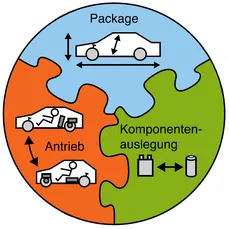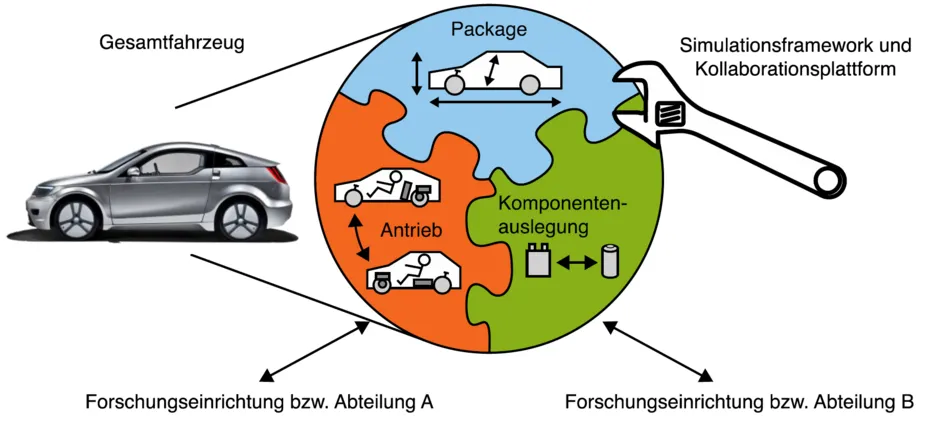sim2gether - Collaboration Platform for Interdisciplinary Simulation
Project completed - Contact: ftm(at)ftm.mw.tum.de
Problem

Development processes in the automotive sector are very complex and different. Especially at the beginning there are many freedoms to realize the vehicle requirements. In order to compare the different possibilities, it is important to estimate many properties of the end product as early as possible. For this reason, in the area of concept development system simulation is an essential tool that is of great importance for the quality of the research and development work.
Different simulation software and the different modeling possibilities result in a rapidly growing number of application- and user-specific simulation models from different disciplines. In this complex and widely distributed model landscape, the models are not uniformly documented. In addition, specific knowledge is required for the use, such as the scope of the model, or the assumptions made for simplifications. For these reasons, the models are only limited use and can only conditionally further developed and improved. As there is currently no cross-group information exchange, this leads to isolated solutions and synergetic effects are given away. Therefore, there is a need to work together on interdisciplinary and cross-domain simulation projects.
Aim
To solve these problems, the Institute of Automotive Technology, together with the Institute of Internal Combustion Engines of the Technical University of Munich and TESIS DYNAware, is launching the Sim2gether research and development project funded by the Free State of Bavaria.
The aim of this research project is to improve the interdisciplinary simulation methodology used in research and industry during the development process. For this purpose, the interactive use of simulation tools as a means of communication and the cross-domain networking of different simulation models will be improved. To accomplish this, metadata management and consistent documentation is needed, addressing the simplifications, scope, and limitations of the model. To this end, an open source model library will be created at the Institute of Automotive Engineering, which serves as the basis for a collaboration platform for interdisciplinary simulations. This platform should enable cross-domain and interdepartmental networking.
Execution
The basis for a standardized model library is the simulation environment Matlab/Simulink. In order to achieve these goals, the Institute of Automotive Technology develops and builds a model library for a complete vehicle simulation, which will be openly accessible as in the future. For this purpose, already existing models are recorded, analyzed and processed. This step extracts the individual components from the models, develops a clearly defined interface architecture and elaborates the necessary context information. The components and related information are then integrated into the model library.
The library serves as the basis for a collaboration platform for interdisciplinary simulations and is designed by THESIS DYNAware. This platform follows the approach to collaborative engineering. This approach enables the exchange of documentation and metadata. Thus, different research groups can work interactively with one another while exchanging information at the same time.
To test and validate the collaboration platform, employees and students from the Department of Automotive Engineering and the Department of Internal Combustion Engines will use this platform and design a complete vehicle model with various variations.
